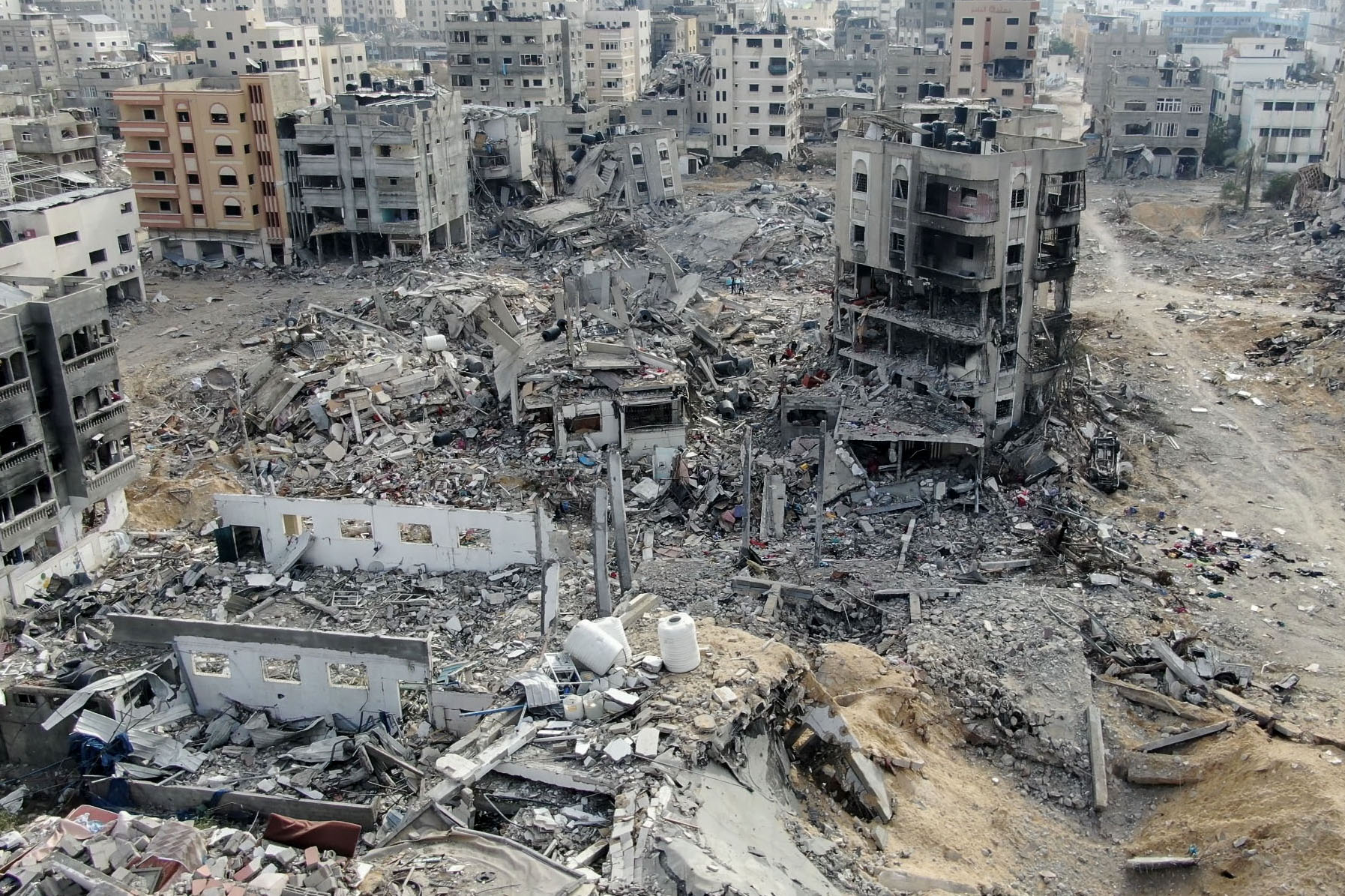Even well into 2022, long after the war in Ukraine had started, the media were still “reporting the last war,” so to speak. The New Yorker headlined a report on the Bayraktar TB2 drone that was widely considered to have won the 2020 Nagorno-Karabakh war, “The Turkish Drone That Changed the Nature of Warfare.”
Little wonder, because the TB2 had proved formidable beyond its size, an unmanned drone that carried laser-guided bombs. Throughout the six-week war, Azerbaijan used the TB2 to startling effect, blowing up tanks and troops and then broadcasting video of the attacks. For a fraction of the cost of conventional fighter jets, Azerbaijan was able to dominate the airspace above Nagorno-Karabakh and win a swift victory.
The rest of the world noticed and militaries began to reassess what role small, cheap drones might play in future wars. When the Ukraine war started, the Ukrainian military used the TB2s to devastating effect, taking out Russian tanks, trains and even ships – and gleefully posting the footage to social media. A new era of war had begun, where a drone costing just a few million dollars could prove highly effective against one of the world’s most powerful militaries. The financial asymmetry was frightening.
Yet the two major wars of this year have shown that, while such asymmetry exists, the future of war is much more similar to its past.
Drones have fallen away from the Ukrainian battlefield, as Russia’s initially chaotic invasion has entrenched itself into defensive positions and its air defenses have adapted. Ukraine’s much vaunted counteroffensive has stalled – stalemated or defeated, depending on who you ask. All along Russia’s vast defensive lines in eastern Ukraine, Kyiv’s troops are bogged down, unable to punch holes through the lines.
Video taken recently of Ukrainian soldiers pinned down in a field outside Bakhmut looks like something straight out of World War I: the same bleak, treeless landscape, the sound of artillery slamming into fields while troops take cover in muddy ditches, the screams of the wounded. Ukraine’s war is brutal and grinding, its effect on people and landscapes unknown in recent wars.
That is, until the Gaza war. Just as the conflict started with a burst of new technology as Hamas used drones to disable surveillance systems, so it eventually ossified into a war from another century. Vast parts of Gaza were flattened by aerial bombardment and Israeli troops faced street by street battles. As in Ukraine, the civilian toll has been enormous.
That is because, at its heart, war hasn’t really changed, and perhaps can’t. Yes, there have been short, swift wars – the first Gulf war, for example. But war in general is a continuation of political persuasion by other means, and that means that war invariably affects the entire population, often as a method for persuading the politicians.
What has changed with Ukraine and Gaza is that these wars are now fought in full view of the world, and of a watching Western audience. The scale of the destruction is different, but the nature of it is not.
The devastation in Gaza or the ruinationof Bakhmut are not new. This is what war looks like, and always has; it’s just that in the West, audiences have so rarely been confronted by its reality. These two wars have played out across the media for opposite reasons – in Ukraine, to persuade Western audiences to accept the choices of their politicians; and in Gaza to persuade them to oppose them. In both cases, the reality on television and phone screens has been a wake-up call to an audience thankfully unused to what real conflict looks like up close.
Just as the future of war hasn’t changed that much, nor has the nature of war, which is ultimately an extension of politics. What hasn’t changed in Ukraine or Gaza is the ultimate importance of what happens off the battlefield.
Those who wage wars easily forget that the purpose of war is not to keep fighting, but to bring the fighting to an end. Politicians, too easily lulled by the glory and rhetoric of war, forget this too.
In Ukraine, the initial idea of arming the Ukrainians was not to allow them to fight a years-long war, but to give them the ability to stalemate the Russians and bring them to the negotiating table. In Gaza, it was – or should have been – to destroy Hamas’ militant structure, not to punish the whole exclave.
In both cases, the longer the brutal war has gone on, the harder it has become for the politicians who are ordering the wars to find ways off the battlefield. A long war has bolstered the commitment of Ukrainians to fight, especially after so much loss of human life. The same is true on the Russian side, at least as regards political commitment: Vladimir Putin can’t back down from this very public fight. The exact same dynamic is on show in Gaza, with Israeli politicians using stronger and more forceful rhetoric, even as the war’s initial aims retreat further away.
This year of conflict has shown that the old wars don’t die away; new technology, new enmities and new political leaders simply emerge to fight the same old wars, the same old way, often again and again.
Faisal Al Yafai is currently writing a book on the Middle East and is a frequent commentator on international TV news networks. He has worked for news outlets such as The Guardian and the BBC, and reported on the Middle East, Eastern Europe, Asia and Africa. X: @FaisalAlYafai

